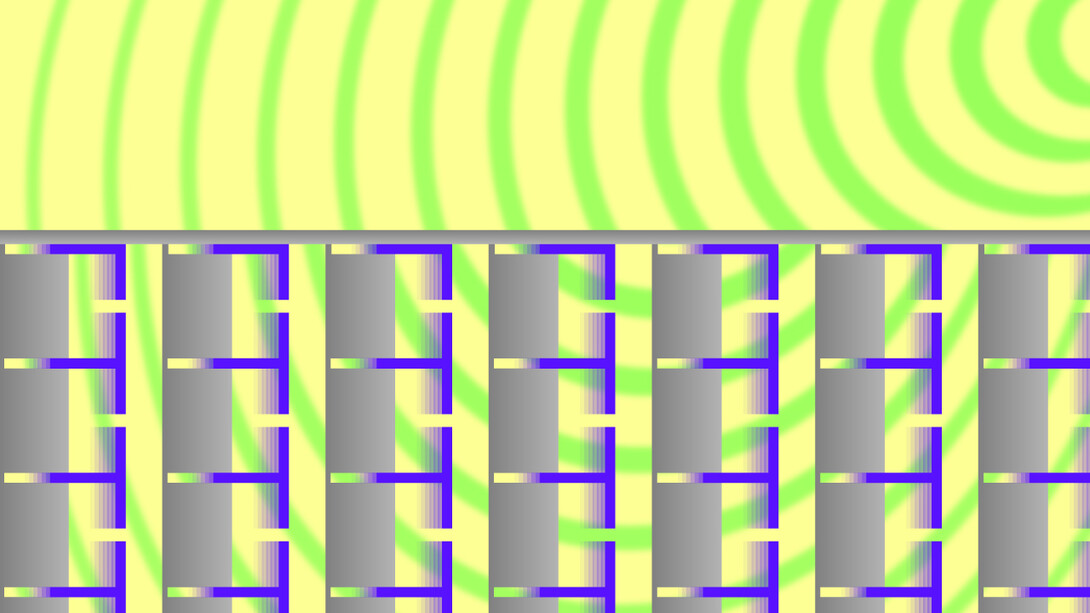
Tuning the instruments that produce some of our most indelible sound waves — guitars, pianos, vocal chords — has become commonplace, expected, easy.
Tuning the surfaces awash in those waves, in real time? A much trickier proposition. But a wave-altering prototype from the University of Nebraska–Lincoln’s Mehrdad Negahban and Peking University colleagues could point the way — and find use in applications that range from magnifying signals to disorienting adversaries.

“We live in a world filled with sound waves that help us communicate, triangulate and evaluate,” said Negahban, professor of mechanical and materials engineering. “Our ears let us triangulate the source of sounds. Listening to the reflections of sound waves helps us characterize the properties of the surface that they are reflecting from.
“What if we could change them at will? Could we use this surface to cloak a source or create an illusion?”
Though its potential is tantalizing, the prototype’s design is relatively straightforward: a surface of 32 vertical channels, each connected to resonators that can be adjusted via horizontal T-shaped sliders.
By extending or retracting the sliders to narrow or widen the corresponding pipes, the team showed that the prototype can dynamically redirect the sound waves passing through the surface.
“It’s such a simple idea,” Negahban said. “The only thing you have to do is adjust these sliders.”
Though the idea of engineering materials or surfaces to strategically refract sound waves is well-established, most existing designs are static, the team said.
“A lot of what they’ve done is not tunable,” Negahban said. “We looked at that and said, ‘We can figure out a way to control this thing.’”
Computer simulations run by Peking University’s Zhong Chen, a doctoral alumnus of Nebraska, allowed the team to predict how any configuration of the pipes would alter the waves’ refraction angle. Though the team adjusted the configurations of its 3D-printed plexiglass prototype by hand, incorporating an electronic control system would enable users to easily make adjustments on the fly, he said.
Those same simulations offered a preview of what’s possible when a solid surface can dynamically refract sound waves in ways that violate expectations. Certain circular configurations could make listeners or acoustic signal-readers sense that a structure is residing somewhere other than its actual location — and let users change the dummy location in real time. Other configurations could potentially trick listeners into believing that a stationary structure is moving, or vice versa.
“Essentially, you could make it look like something isn’t there, or it’s someplace it’s not,” Negahban said. “That could have military applications. Obviously, if someone wants to hit it, you want them to hit the wrong place.”
Alternatively, the design could focus sound waves in much the same way that cupped hands help a voice carry or an optical lens focuses waves of visible light to magnify their signal at a given point, Negahban said. As opposed to a radially expanding wave, which loses substantial energy as it travels, a focused wave better maintains its energy and can consequently travel greater distances while retaining a useful signal, he said.
“You could do a lot of things with these waves,” Negahban said. “One almost wonders why we weren’t doing a little bit more of this before, but I suppose we were just caught up in other stuff.”
The team published its results in the Journal of Physics D: Applied Physics. Negahban and Chen authored the paper with Peking University’s Zheng Li and Shixuan Shao.







